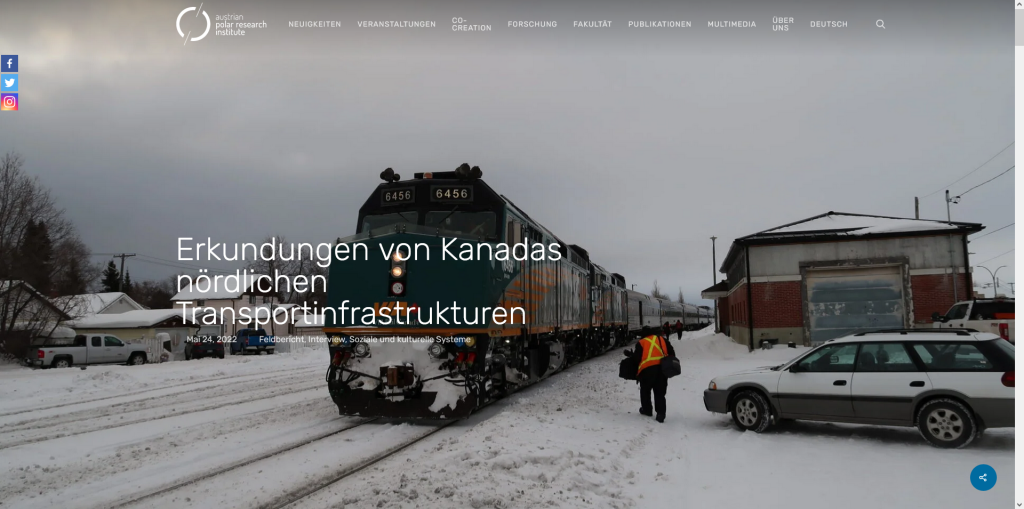Budka, P. (2022). The failures and promises of transport infrastructure in a remote Canadian town. Paper at 17th Biennial Conference of the European Association of Social Anthropologists (EASA), Belfast, UK: Queen’s University Belfast, 26-29 July.
Abstract
This paper explores changes in the transport infrastructure of the remote town of Churchill in northern Manitoba, Canada. The town of about 900 residents is located on the 58th parallel north at the Hudson Bay and has become known as the “polar bear capital of the world”.
Churchill is unique in terms of transportation. Canada’s only deep-water port on the Arctic Ocean is located there. And this port is the only port in the American (Sub)Arctic with a direct link to the North American railway network. The town, which is inaccessible via roads, only exists because of these transport infrastructures.
In 2017, when a flood washed out railway tracks, this infrastructural entanglement once again became apparent. Suddenly, Churchill was without overland access and life changed drastically. Food and other items had to be flown in at high costs and residents utilized snowmobile trails to reduce transportation costs.
The port had to close, people lost their jobs and families left. The town negotiated with the province, the state and the company which owned the railway to get the tracks fixed. After 18 months, they were finally repaired. In 2021, however, the port again was closed for grain shipping due to renovations.
By discussing results of a first ethnographic field trip to Churchill, this paper focuses on the failures and promises of transport infrastructures. Churchill is one of several field sites in the ERC project InfraNorth, which looks into affordances of transport infrastructures on a pan-Arctic scale through an anthropological lens.







